
Aluminum toxicity stress
Identification of Al-tolerance genes and their regulation
Al toxicity stress is the major factor limiting crop production on acid soils. Through mutant screening and by utilizing genotypic difference in Al tolerance, we have identified a number of genes involved in Al tolerance. We found HvAACT1 is responsible for Al-induced secretion of citrate in barely. Furthermore, we found that a 1-kb insertion in the upstream of HvAACT1 enhances the expression of HvAACT1 and alters the spatial expression of HvAACT1 from the original location in the mature root zone (required for the root-to-shoot translocation of iron) to the root tips in the Al-tolerant cultivars, which has been adapted to the acid soils. In rice, we identified a transcription factor, ART1 for Al tolerance and functionally characterized several downstream genes regulated by ART1. We found that high Al tolerance in rice is achieved by multiple Al tolerance genes functioning at different cellular sites. In addition, we have also identified several Al-tolerance genes in other Al-tolerant species.
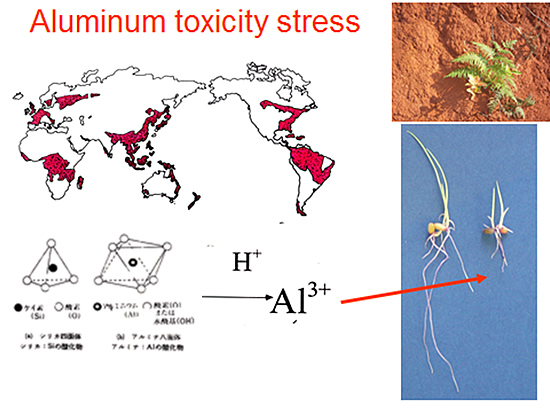
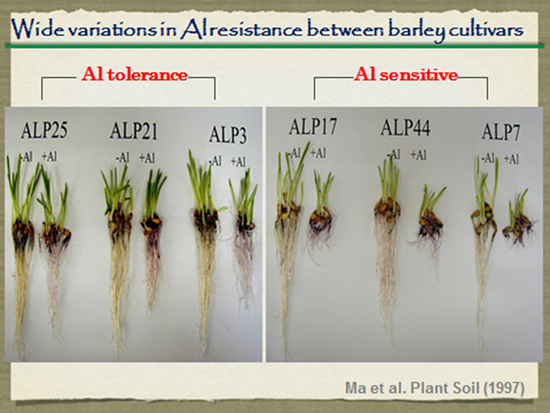
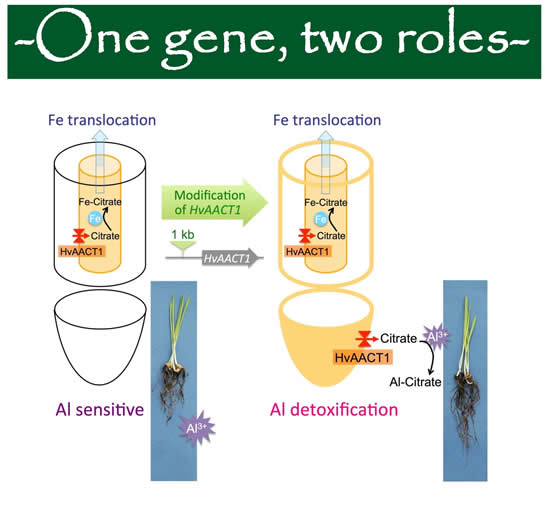
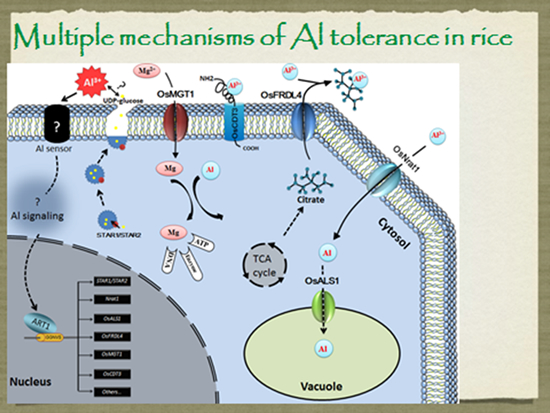
Key publications
- Yamaji, N., Huang, C. F., Nagao, S., Yano, M., Sato, Y., Nagamura, Y. and Ma, J. F. 2009. A Zn-finger transcription factor ART1 regulates multiple genes implicated in aluminum tolerance in rice. Plant Cell 21: 3339-3349
- Huang, C. F., Yamaji, N., Mitani, N., Yano, M. Nagamura, Y. and Ma, J. F. 2009. A bacterial-type ABC transporter is involved in aluminum tolerance in rice. Plant Cell 21: 655–667.
- Xia, J. X., Yamaji, N. Kasai, T. and Ma, J. F. 2010. Plasma membrane-localized transporter for aluminum in rice. Proc Natl Acad Sci USA 107:18381-18385.
- Yokosho, K., Yamaji, N. and Ma, J. F. 2011. An Al-inducible MATE gene is involved in external detoxification of Al in rice. Plant J. 68: 1061-1069
- Xia, J. X., Yamaji, N., Ma, J. F. 2013. A plasma membrane-localized small peptide is involved in rice Al tolerance. Plant J. 76, 345–355
- Huang, C. F., Yamaji, N., Chen, Z. and Ma, J. F. 2012. A tonoplast-localized half-size ABC transporter is required for internal detoxification of aluminum in rice. Plant J. 69: 857–867
- Chen, Z. C., Yamaji, N., Motoyama, R., Nagamura, Y. and Ma, J. F. 2012. Up-regulation of a magnesium transporter gene OsMGT1 is required for conferring aluminum tolerance in rice. Plant Physiol 159:1624–1633.
- Fujii, M., Yokosho, K., Yamaji, N., Saisho, D., Yamane, M., Takahashi, H., Sato, K., Nakazono, M. and Ma, J. F. 2012. Acquisition of aluminium tolerance by modification of a single gene in barley. Nature Communications, 3:713 doi: 10.1038/ncomms1726.
- Chen, Z. C., Yokosho, K., Kashino, M., Zhao, F. J., Yamaji, N. and Ma, J. F. 2013.Adaptation to acidic soil is achieved by increased cis-acting element numbers regulating ALMT1 expression in Holcus lanatus. Plant J. 76: 10–23
Internal detoxification of Al
Some species such as tea, buckwheat and hydrangea are able to accumulate high Al in the leaves without showing any toxicity symptoms. We have physiologically characterized transport system of Al in terms of uptake, translocation, distribution and sequestration in buckwheat. We also have identified the forms of Al in different organs. We found that internal detoxification of Al is achieved by formation of non-phytotoxic complex of Al with oxalate and sequestration of this complex into the vacuoles in buckwheat. Anyway, color of hydrangea sepal changes with Al concentration from pink to blue with increasing Al concentrations.
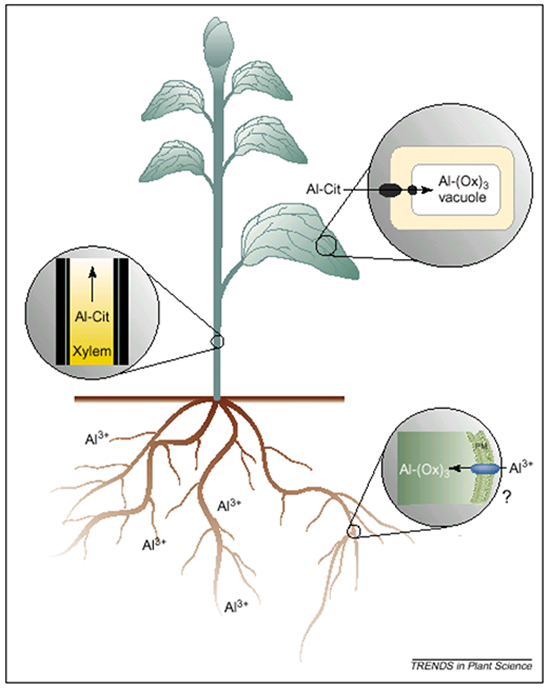
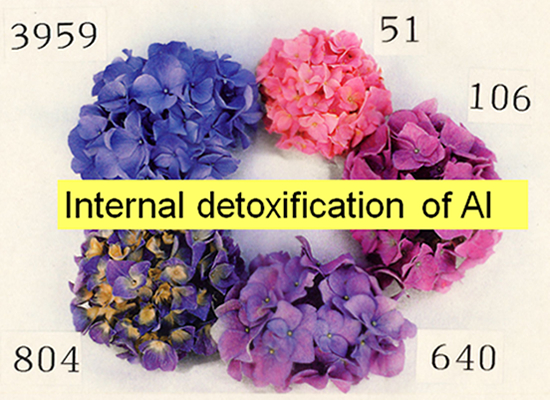
Key publications
- Ma, J. F., Zheng, S. J., Hiradate, S. and Matsumoto, H. 1997. Detoxifying aluminium with buckwheat. Nature 390: 569-570.
- Zheng, S. J., Ma, J. F. and Matsumoto, H. 1998. High aluminum resistance in buckwheat. I. Al-induced specific secretion of oxalic acid from root tips. Plant Physiol. 117: 745-751.
- Ma, J. F., Hiradate, S. and Matsumoto, H. 1998. High aluminum resistance in buckwheat. II. Oxalic acid detoxifies aluminum internally. Plant Physiol. 117: 753-759.
- Ma, J. F. and Hiradate, S. 2000. Form of aluminium for uptake and translocation in buckwheat. Planta 211: 355-360.
- Shen, R and Ma, J. F. 2001. Distribution and mobility of aluminium in an Al-accumulating plant, Fagopyrum esculentum Moench. J. Expt. Bot. 52: 1683-1687.
- Shen, R. F., Ma, J. F., Kyo, M. and Iwashita, T. 2002. Compartmentation of aluminium in leaves of an Al-accumulator, Fagopyrum esculentum Moench. Planta 215:394-398.







